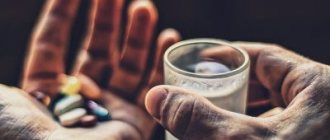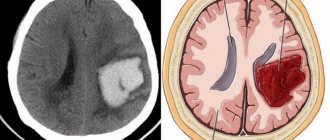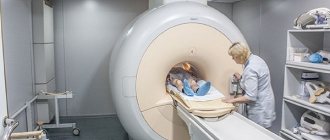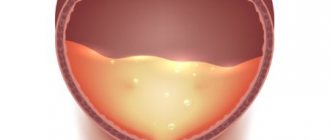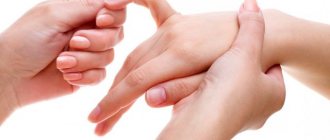Stroke is a pathology that is currently epidemic. The number of attacks increases several times every year. The consequences of a stroke are almost always negative - they are either serious complications of life or death.
According to the World Health Organization, one person dies from a stroke every 6 seconds. Unfortunately, at the moment, the questions: what is death from a stroke, what does it look like and what can a patient feel do not lose relevance, but are widespread.
Some world statistics
Stroke is one of the truly dangerous diseases, which annually occupies a leading position in mortality. According to unofficial data, every 2-3 seconds one person in the world suffers an attack.
A few decades ago, the disease was considered age-related. Stroke at a young age was considered the exception, not the rule. However, at the moment, the pathology has not only become more “younger”, but even children are dying from strokes.
The main danger of a stroke is that the attack is sudden and the symptoms clearly appear when large-scale brain damage begins. Time and competence in emergency care play a huge role.
Important! Timely treatment to the hospital and comprehensive medical interventions reduce the risk of a recurrent attack and can prevent the death of the patient.
Bedridden patient after a stroke: signs before death, help
Stroke is a severe pathological process that is accompanied by impaired blood supply to the brain. The disease is of an ischemic or hemorrhagic type, according to which treatment is carried out. The patient's condition is determined according to how much the brain is affected. If many functions are lost, then the person is in a supine position. Patients may be diagnosed with death after a stroke.
What's happening in Russia?
According to medical data, 450,000 people suffer ischemic or hemorrhagic stroke per year. Stroke and mortality are two inseparable concepts, since every year the number of attacks that end in death grows exponentially.
According to official WHO data, Russia is annually on the list of leaders in the number of deaths.
A larger percentage of patients are women. This is due to the fact that the female body copes much worse with hemorrhages or brain hypoxia. In men, survival and the chance of a positive prognosis for rehabilitation after illness are 10 percent higher.
Doctors note several more factors that characterize attacks in Russia:
- The percentage of people who have had a stroke to the healthy population is much higher in large cities. Leaders at the moment: Moscow and St. Petersburg. The number of patients in the capital for 20 years has been 36,000 – an absolute negative record. In St. Petersburg, the number of patients reaches 25 thousand.
- The number of instant deaths is 15%.
- More than half of the attacks occur in the ischemic form and only 20% in the hemorrhagic form.
As of 2020, the number of deaths from stroke, as well as the number of attacks, has decreased.
- Over the past few years, the number of strokes has increased, outpacing myocardial infarction, which has been one of the most common diseases for a long period of time.
In the coming years, data on stroke will only increase. Experts explain this by the fact that the majority of the young population leads an unhealthy lifestyle, abuses bad habits and avoids physical activity.
Note! Sports, a healthy diet, and the exclusion of alcohol, cigarettes and drugs reduce the risk of pathological conditions of the cardiovascular system.
Gender data
Death from stroke is much higher among females. But men get sick 30% more often. Female mortality is 50%, male 40%.
The reason lies in frequent hormonal disruptions in the body of women, and the fact that stroke affects older people over 65 years of age. And at this age the percentage of women is higher.
How to determine that a patient has died
| Signs | Description of symptoms |
| Coma | A). There is no consciousness, the patient does not react to any stimuli: screaming, blows to the cheeks, the pungent smell of ammonia. |
| b). There are no reflexes, the pupils are dilated, there is no reaction to light. | |
| V). There are symptoms of “cat's eye” (when the eyeball is squeezed from the sides, the pupil turns into a slit), “floating ice” (the cornea becomes cloudy and dries out). | |
| Apnea | There is no breathing. You can determine this by placing your hand on your chest. |
| Asystole | A). The pulse in the large arteries (carotid, femoral) is not detected. |
| b). Heart sounds cannot be heard with a phonendoscope. | |
| V). The ECG shows no symptoms of contraction of the heart muscles (teeth and waves), an isoline is recorded. |
If a comatose patient is on mechanical ventilation, the pupils are dilated due to the severity of the comatose state or the effect of drugs, then death in the first minutes can be recorded only by determining asystole (ECG).
Support of artificial circulation and respiration, started no later than 4-5 minutes later, can protect intact cells of the cerebral cortex from death. Then the cells of the cortex die, and even if it is possible to restore the heart rate and breathing, the patient will no longer regain consciousness. This is due to the fact that the neurons responsible for supporting vital functions die later, after 10-15 minutes.
There are also late signs that determine biological death, which appear during the first day:
- Decreased body temperature.
- Formation of corpse spots.
- Rigor mortis.
- Decomposition of tissues.
Death in patients after a stroke can be caused by various reasons. Therefore, to date, it is the prevention of circulatory disorders that can help reduce mortality, which currently ranks second in the list of diseases leading to the death of the patient.
Risk zone – who is in it?
To avoid the question: “can you die from a stroke?” it is necessary to understand who is at risk and what factors influence the development of pathology. And if you notice such signs in yourself or your loved ones, be sure to register with the hospital and pay close attention to your health.
Factors that increase the risk of stroke:
- sudden, intense changes in blood pressure,
- genetic predisposition to cardiovascular pathologies,
- excess body weight,
- hypertonic disease,
- endocrine pathologies, in particular diabetes mellitus,
- atherosclerosis,
- increased cholesterol levels in the blood,
- smoking and alcohol abuse,
- passive lifestyle,
- vascular dystonia of the brain or VSD,
- atrial fibrillation.
If the above conditions are present, it is necessary to undergo regular preventive examinations.
How to reduce the likelihood of death
First of all, you should avoid stress, states of emotional overstrain and worries. In the most unusual situations it is necessary to remain calm.
The risk of premature death from stroke can be reduced by leading a healthy lifestyle, closely monitoring your health, and promptly treating inflammatory and other diseases.
To reduce the negative impact of environmental factors, difficult climatic conditions of existence should be avoided. It is also necessary to limit the consumption of salt and animal fats, and organize a proper and balanced diet. Smoking and drinking alcohol is unacceptable!
Which form is more dangerous?
Stroke is divided into two types: hemorrhagic and ischemic. The latter is more common. In this case, blood flow to the brain is disrupted, causing hypoxia and cell death.
Hemorrhagic stroke is less common, but the mortality rate is much higher. With such an attack, bleeding occurs in the brain. Most often, a person who has suffered such a stroke dies on the first day.
The risk of an unfavorable outcome increases sharply with a second attack or with a major stroke. People who have suffered a brainstem stroke have a negative prognosis: damage to the cerebellum or midbrain. In this case, there is a high possibility of cell death in the sections that regulate respiration and heart function. A person may die from cardiac or respiratory arrest.
Important! Everyone needs to know the basic symptoms of a stroke; if it occurs in a loved one or passerby, seek medical help as soon as possible.
Why does death occur as a result of a stroke?
Mostly, patients who die after apoplexy while still in the hospital die due to the sudden death of cells in the cerebellum or brain stem. In turn, the cells of these departments die for the following reasons:
- A sharp lack of oxygen in the brain stem or cerebellum.
- Hemorrhagic or ischemic stroke in these departments.
- Hemorrhage in the area of the ventricles of the brain. In this case, the resulting hematoma blocks the outflow of cerebrospinal fluid. As a result, the free circulation of cerebrospinal fluid is disrupted. Against this background, first swelling occurs, and then displacement of the brain stem.
In addition to these reasons, it is necessary to take into account all pathological conditions and diseases that develop against the background of a stroke. More often these are heart or other pathologies. They occur mainly in older people. This is myocardial infarction, renal, heart or liver failure. A patient who has such consequences of a stroke dies within 1–2 years of life from the onset of apoplexy.
How long does it take for pathology to lead to death?
One of the questions asked by loved ones of a person who has suffered a stroke and has virtually no chance of survival is: “how long does it take to die from a stroke?” At the same time, no specialist can answer this question unambiguously, since everything depends on age, the extent of the damage and the individual characteristics of the body.
If the patient is in a coma, then his chances are reduced. However, there is a long-term comatose state from which a person can emerge even several years after the attack.
The increase in risks and reduction in life expectancy is influenced by the development of complications:
- pneumonia,
- the formation of renal failure,
- significant bedsores,
- sepsis,
- embolism of the pulmonary artery that forms against the background of ischemic stroke.
The occurrence of these negative consequences indicates the approaching death of the patient.
Causes of death in patients with stroke
There are symptoms and signs that indicate the severity of the condition and the likelihood of imminent death of the patient. So, if a patient has symptoms of hemorrhagic damage to the brainstem and cerebellum, then in 70-80% of cases the person dies. Symptoms of circulatory disorders in the stem region:
- disturbance of consciousness;
- with ischemic damage, loss of coordination, unsteady gait, sweeping movements are early signs;
- “locked-in person” syndrome, its symptoms: the patient cannot speak, move, only opens and closes his eyes, and he understands everything;
- impaired swallowing, absence of a swallowing reflex is also observed in grade 3–4 coma, this is a sign of a deepening, unfavorable course of the coma, therefore 90% of such patients either die or remain on artificial ventilation;
- symptoms of lack of control over limb movements; the muscles do not act synchronously, normally the flexors and extensors should act harmoniously, but in the patient this function is disrupted, hence the high tone of the muscular system, inadequate motor activity, convulsions;
- an increase in temperature of more than 40 degrees is a temperature of central origin, when the neurons responsible for thermoregulation are damaged, most often it is difficult to lower it with medications; therefore, the patient is given chilled solutions or the head is covered with ice;
- symptoms of eye movement disorders - with damage to the brainstem and cerebellum, asynchronous, pendulum-like movements are observed, the “doll’s eye” symptom;
- unstable hemodynamics - high blood pressure, rapid pulse, may be arrhythmic, if bradycardia begins after this, the prognosis is poor;
- breathing disorders - pathological types of breathing are noted: Kussmaul (deep, noisy), Cheyne-Stokes (after rare shallow breaths appear deep), Biota (long pauses between breaths).
In most cases, if blood circulation in the stem region is impaired, the patient dies
These signs indicate damage to the cells of vital centers and are harbingers of the possibility of death.
A sign of a person's imminent death has been named: 7 days before death you will feel these symptoms
Lost among the vast expanses of vast Russia are many unusual places that have a reputation as an anomalous zone. One of them is the Shushmor tract, which, according to legend, is located in the remote thickets, somewhere on the border of the Vladimir and Moscow regions.
Most of the amazing stories associated with Shushmore do not have documentary or material confirmation, however, over many years of research, enough information has been accumulated to allow us to say that this place cannot be called ordinary.
The first mentions of Shushmore date back to the 12th-13th centuries. Shushmor began to manifest itself as an anomalous zone after the 17th century, when the Kolomna tract was built nearby. People started disappearing on it.
In the summer of 1885, a member of the zemstvo council of the city of Pokrov, Kuryshkin, disappeared, and with him the driver, Gerasim Kudrin, disappeared. Two years later, on the Kolomensky tract, an entire convoy disappeared without a trace - four carts loaded with iron.
The drivers and the clerk accompanying the cargo, Ivan Ryumin, disappeared with them. In 1893, a postman disappeared while carrying mail from Yegoryevsk to Vladimir. In 1896, land surveyor Rodionov disappeared along with the chaise and driver Ivan Sedykh.
In 1897, peasants Alexey Guzhov and Rodion Sidorov disappeared on the highway. According to information collected by researcher Nikolai Nepomniachtchi, only in the period from 1880 to 1920 there were 19 disappearances without a trace.
One of the first explorers of this mysterious tract was the famous traveler and geographer P. Semenov-Tyan-Shansky.
According to the famous researcher, among the lakes and swamps of Shushmor there is an ancient megalithic complex. Unfortunately, the exact location of the unique attraction was not indicated.
So far, none of the numerous expeditions have been able to discover it.
The existence in Shushmor of a granite hemisphere with a diameter of about 5-6 meters, surrounded by stone pillars with incomprehensible signs, is also spoken of in ancient legends. This mythical structure is considered to be an ancient pagan temple.
According to local historian Viktor Kazakov, the Shushmor tract (the more correct name is Ushmor) was built around 2000 BC by a tribe of lake people who practiced magic and knew how to control natural forces.
The lake people worshiped the snake god Ur.
This cult is evidenced by objects found during archaeological excavations, for example, shards of pottery with snake designs. This temple was dedicated to Ur.
It was located on the site of the present village of Shatur (“shat” means “small hill”, “Ur” - “snake king”), in front of which a ritual stone still stands.
Kazakov claims that in these parts there are underground boulders, which are sometimes pushed to the surface by an unknown force.
The sanctuary was a raised platform on which stood a wooden or stone idol. A sacred tree grew nearby. By lighting a fire in front of the temple, human sacrifices were made to God. Once upon a time there was a spring near the village: sanctuaries were usually built near water sources.
In addition, the places for the construction of sanctuaries were not chosen randomly. As a rule, these were places of power where powerful emissions of energy from the bowels of the earth occurred. Indeed, researchers have repeatedly recorded an anomaly here, expressed in the twisting of the magnetic field strength lines, the epicenter of which was in the supposed area of the location of the mysterious tract.
Another local legend says: “...There is a place in a mysterious tract where you can see a small hill made of stones. Time has hidden the hill with grass and bushes, but local legend says that one of the generals of Batu Khan himself rests under it.
He led a detachment to the city of Vladimir, but they got stuck in the Shatura swamps. Many soldiers drowned, and the khan also died. This hill was built from stones at the site of his death. Since then his spirit has been angry.
Thunderstorms arise over Shushmora and then you can observe that when it rains, the brightest lightning, the blackest cloud is over the place where the Shushmora river flows” (V. Bolshakov “The Story of the Legend”).
If the disappearances of people can be explained by realistic reasons, such as falling into a swamp, then even the most inveterate skeptics cannot refute the unusualness of some phenomena.
One of these inexplicable facts is the existence of forest areas with giant plants. The height of ordinary ferns in these places exceeds human height; there are pine trees with a trunk thickness of two girths. Another amazing plant anomaly is a birch grove, the tree trunks of which are square in shape.
It should be noted that the unusual and not at all positive energy of this place, apparently, has long been known to the residents of the region. For many centuries, people were wary of establishing settlements near the mysterious tract. The almost complete absence of any settlements in the Shushmor area is immediately noticeable.
Despite all the difficulties, unreliability and contradictory information about Shushmore, the interest of serious researchers and idle tourists in this mysterious place has not subsided for many years. Perhaps the time will come when Shushmore will reveal all his secrets.
Source: https://lostworlds.mirtesen.ru/blog/43195580452/Nazvan-priznak-skoroy-smerti-cheloveka:-za-7-day-do-smerti-vyi-

